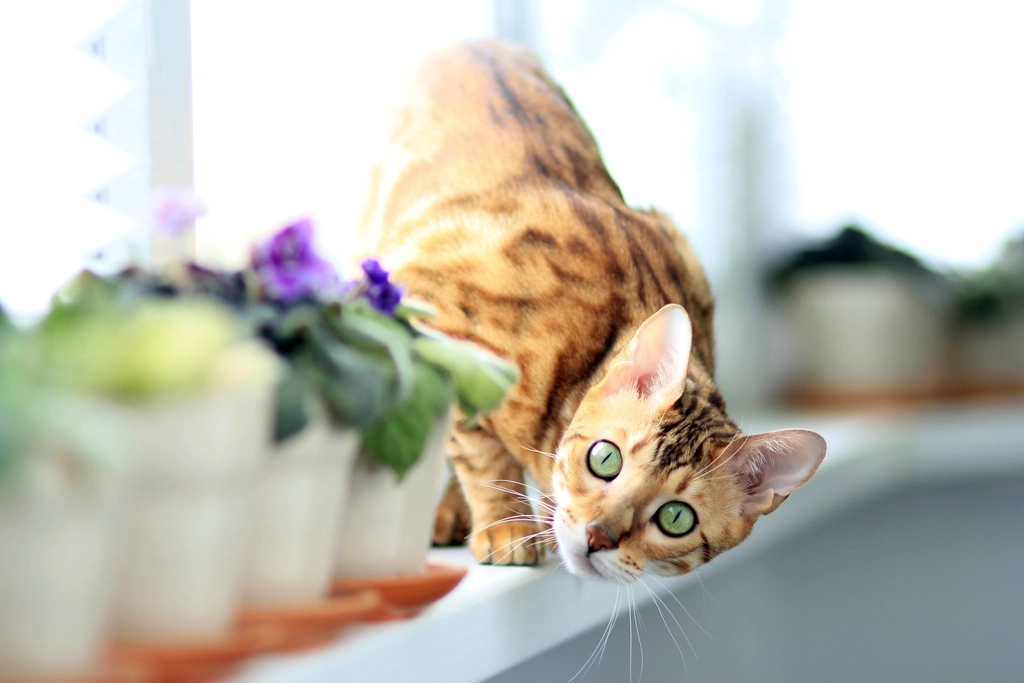Imagine the world through a cat’s eyes: familiar scents, sounds, and people suddenly vanish, replaced by a totally unknown environment. For many cats, being rehomed is a whirlwind of confusing emotions, but their subtle signals often go unnoticed. From silent distress to unexpected bursts of joy, cats reveal so much more than we realize. Let’s unlock the secret world of feline feelings and discover the 10 emotional patterns cats show after being rehomed—because every meow and purr tells a heartfelt story.
Withdrawal and Hiding
One of the most common emotional patterns seen in rehomed cats is withdrawal. Many cats will immediately seek out a secluded spot in their new home—under a bed, behind a couch, or in a quiet closet. This behavior is their way of coping with the overwhelming stress of change. They may avoid eye contact, refuse to interact with people, and even ignore food or toys. These actions are not about being unfriendly, but rather a desperate attempt to find safety in the unfamiliar. It’s heartbreaking to watch a once-confident cat suddenly shrink away, but patience and gentle encouragement are key. Over time, as the cat becomes more comfortable, you’ll notice them venturing out more, showing that trust is slowly building.
Excessive Vocalization
Some cats express their confusion and anxiety through increased vocalization. This can include loud meowing, yowling, or even plaintive crying at night. It’s their way of calling out for the familiar, almost as if they’re searching for their previous humans or environment. The sound can be shocking and tug at your heart, especially when it’s persistent. Cats don’t have words, but their voices carry strong emotional messages, from loneliness to fear. Responding with calm reassurance and gentle petting can help soothe their nerves. Over several days or weeks, as the cat settles, these vocal outbursts typically lessen, replaced by quieter, more contented sounds.
Clinginess and Attachment
While some cats withdraw, others become surprisingly clingy after being rehomed. These cats may follow their new owners from room to room, constantly seeking attention and physical contact. This sudden neediness can be an emotional plea for reassurance and security. In their quest to form new bonds, they may sleep close to you, sit on your lap at every opportunity, or meow for attention. Although it’s heartwarming to feel so needed, this clinginess is rooted in uncertainty and fear of abandonment. With time and consistent affection, most cats develop confidence and settle into a comfortable balance between independence and affection.
Loss of Appetite
A sudden change in surroundings can lead to a noticeable drop in appetite for many rehomed cats. The stress of transition often disrupts their eating habits, causing them to refuse food or eat far less than usual. This is not just a physical reaction but an emotional one, as anxiety dampens their desire to eat. It’s worrying for new owners, who may feel helpless watching their cat ignore even their favorite treats. Offering familiar foods, providing quiet mealtimes, and avoiding pressure can help encourage eating. Once the cat feels more secure, their appetite typically returns, signaling a lift in their emotional state.
Increased Aggression or Fearfulness
Emotional turmoil can sometimes manifest as aggression or fearfulness in rehomed cats. This can include hissing, growling, swatting, or even biting when approached. These behaviors are not signs of a “bad cat,” but rather, classic signals of fear and insecurity. The cat’s world has been turned upside down, and lashing out is a defensive reaction to feeling threatened. It’s crucial to approach these cats with kindness and understanding, avoiding punishment. Over time, with gentle handling and positive experiences, their defensive behaviors tend to fade as they realize they are safe in their new home.
Restlessness and Pacing
Some rehomed cats display restlessness—pacing up and down hallways, circling rooms, or moving from window to window. This anxious activity is often a product of confusion and a search for something familiar. The cat might seem unable to settle, even during times when they’d typically be napping. This heightened state of alertness can last for days or even weeks, depending on the cat’s personality and previous experiences. Providing a predictable routine, comfortable resting spots, and time to adjust can help ease their restlessness. Gradually, as the home becomes more familiar, these behaviors usually diminish.
Sudden Playfulness

In a surprising twist, some cats react to being rehomed by displaying bursts of playfulness. This can seem odd, especially when it happens amidst signs of stress. However, play is a powerful emotional outlet for cats, helping them relieve anxiety and adapt to their new surroundings. They might chase toys, pounce on shadows, or dart around the house in sudden sprints. These moments of joy are a good sign that your cat is starting to feel safe enough to express themselves. Encouraging play with interactive toys or gentle games can help strengthen your bond and speed up their adjustment period.
Over-Grooming or Neglecting Grooming
Changes in grooming habits are a clear window into a cat’s emotional state. Some rehomed cats begin to over-groom, licking and biting their fur excessively as a way to cope with stress. Others may neglect grooming altogether, resulting in a dull or matted coat. Both extremes signal emotional distress and should not be ignored. Watch for signs like bald patches, skin irritation, or a sudden decline in their coat’s appearance. With time, reassurance, and a stable environment, most cats return to their normal grooming routines, signaling a return to emotional balance.
Exploratory Cautiousness
As rehomed cats start to feel a little safer, they often show a cautious curiosity about their new surroundings. You might notice them gingerly sniffing new areas, peeking around corners, or slowly expanding the territory they’re willing to explore. This pattern is a positive step in their emotional adjustment, showing a willingness to engage with the unknown. Cats may investigate furniture, inspect new smells, or observe from a safe distance before venturing closer. Encouraging exploration with treats, toys, or gentle words can help build their confidence. Every small step is a sign that your cat is adjusting emotionally to their new home.
Affectionate Bonding and Trust Building
After the initial wave of emotional upheaval, many rehomed cats begin to show signs of affectionate bonding. This may include head bunting, purring, slow blinking, or curling up beside you. These gestures are powerful statements of trust and acceptance. It’s a deeply moving experience to witness a once-fearful cat initiate gentle contact, showing that they feel secure and loved. Building trust can take time, and every cat’s journey is unique. Offering consistent affection, respect for their boundaries, and patience will reward you with a loyal, loving companion who finally feels at home.

Growing up traveling and experiencing new cultures and wonders, I have had a passion for nature, adventuring, photography, and videography. I am currently working towards a BSc in Biodiversity and Ecology at Stellenbosch University, and I hope to specialise in Marine Sciences one day.
Please send any feedback to Feedback@animalsaroundtheglobe.com





